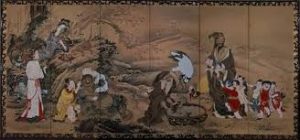traditions
ART UNIONS AND CREATIVE UNIONS OF RUSSIA ON THE TURN OF THE XIX-XX CENTURIES (part 2)
 The Association of New Architects (ASNOVA) is the first organization of innovative architects in post-revolutionary Russia, founded in 1923 in Moscow. The aim of the Association was to develop a new formal-artistic language of architecture, new methods of architectural education. The Association was closely connected with the Faculty of Architecture of Vhutemas, its members (N.V. Dokuchaev, V.F. Krinsky and others) organized a special department there, where teaching was conducted according to the new methodology. In addition, members of ASNOVA appeared in the press on various issues of architecture, and also prepared the publication “Architecture of Vhutemas” (M., 1927). Continue reading
The Association of New Architects (ASNOVA) is the first organization of innovative architects in post-revolutionary Russia, founded in 1923 in Moscow. The aim of the Association was to develop a new formal-artistic language of architecture, new methods of architectural education. The Association was closely connected with the Faculty of Architecture of Vhutemas, its members (N.V. Dokuchaev, V.F. Krinsky and others) organized a special department there, where teaching was conducted according to the new methodology. In addition, members of ASNOVA appeared in the press on various issues of architecture, and also prepared the publication “Architecture of Vhutemas” (M., 1927). Continue reading
VLADIMIR SCHOOL SCHOOL SCHOOL (part 2)
 By the 1970s, the recognizable style of painting, common to all representatives of the Vladimir school, was finally formed. The landscape space in them, as a rule, is reduced to a plane. The plans are brought together, the composition is extremely simple, the horizon line in the paintings is deliberately overestimated. This set of techniques gives reason to talk about the closeness of their aesthetics with the stylistic principles of Rostov-Suzdal icon painting … The letter in Vladimir painting is temperamental, the texture is particularly striking. A completely unique find of Vladimirites is the use of experimental bulk soils that enhance the decorative effect of textured writing. Bright, pasty painting on the textured soil, different heights of the colorful relief in the picture increased the living trepidation of the depicted, enhanced the contrast of the color scheme. Continue reading
By the 1970s, the recognizable style of painting, common to all representatives of the Vladimir school, was finally formed. The landscape space in them, as a rule, is reduced to a plane. The plans are brought together, the composition is extremely simple, the horizon line in the paintings is deliberately overestimated. This set of techniques gives reason to talk about the closeness of their aesthetics with the stylistic principles of Rostov-Suzdal icon painting … The letter in Vladimir painting is temperamental, the texture is particularly striking. A completely unique find of Vladimirites is the use of experimental bulk soils that enhance the decorative effect of textured writing. Bright, pasty painting on the textured soil, different heights of the colorful relief in the picture increased the living trepidation of the depicted, enhanced the contrast of the color scheme. Continue reading




